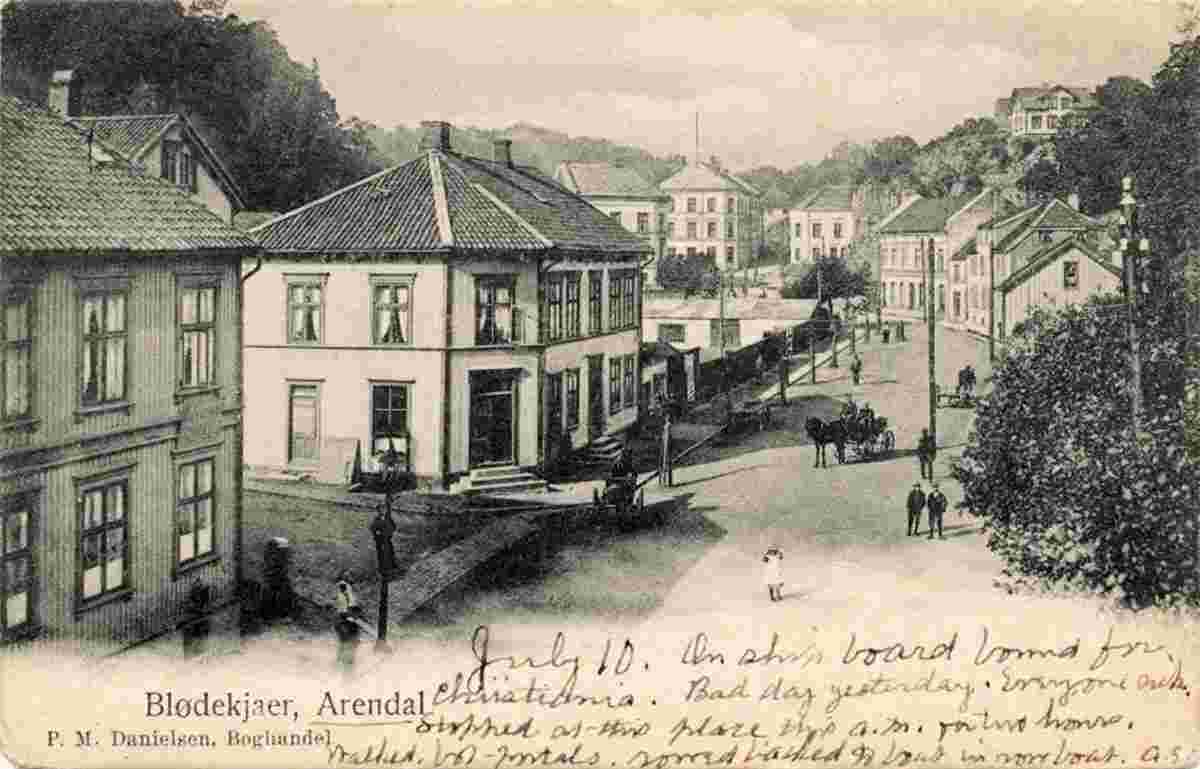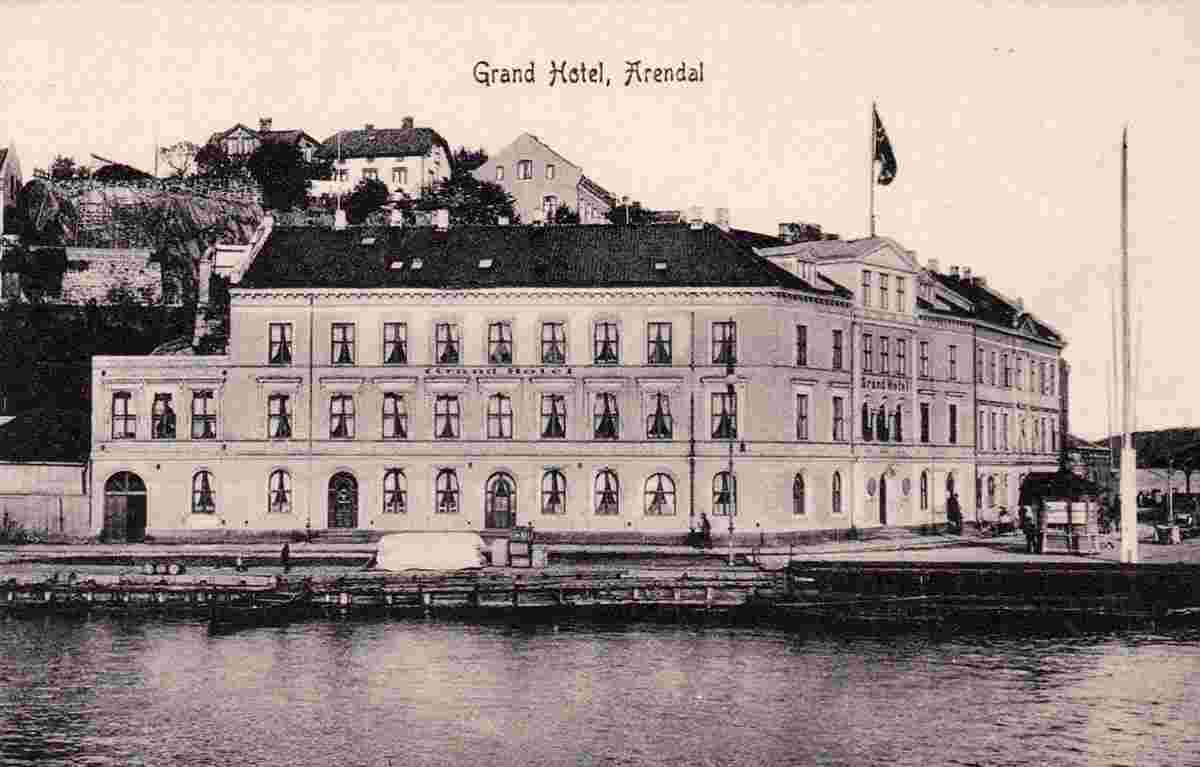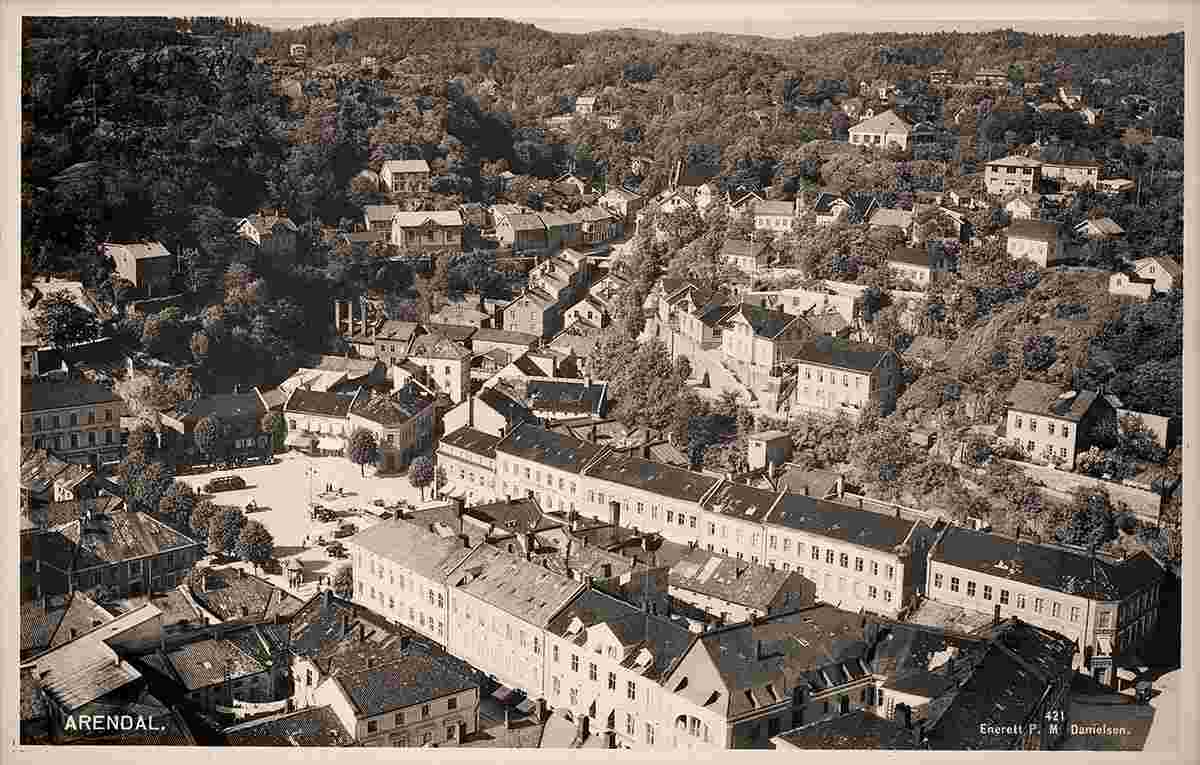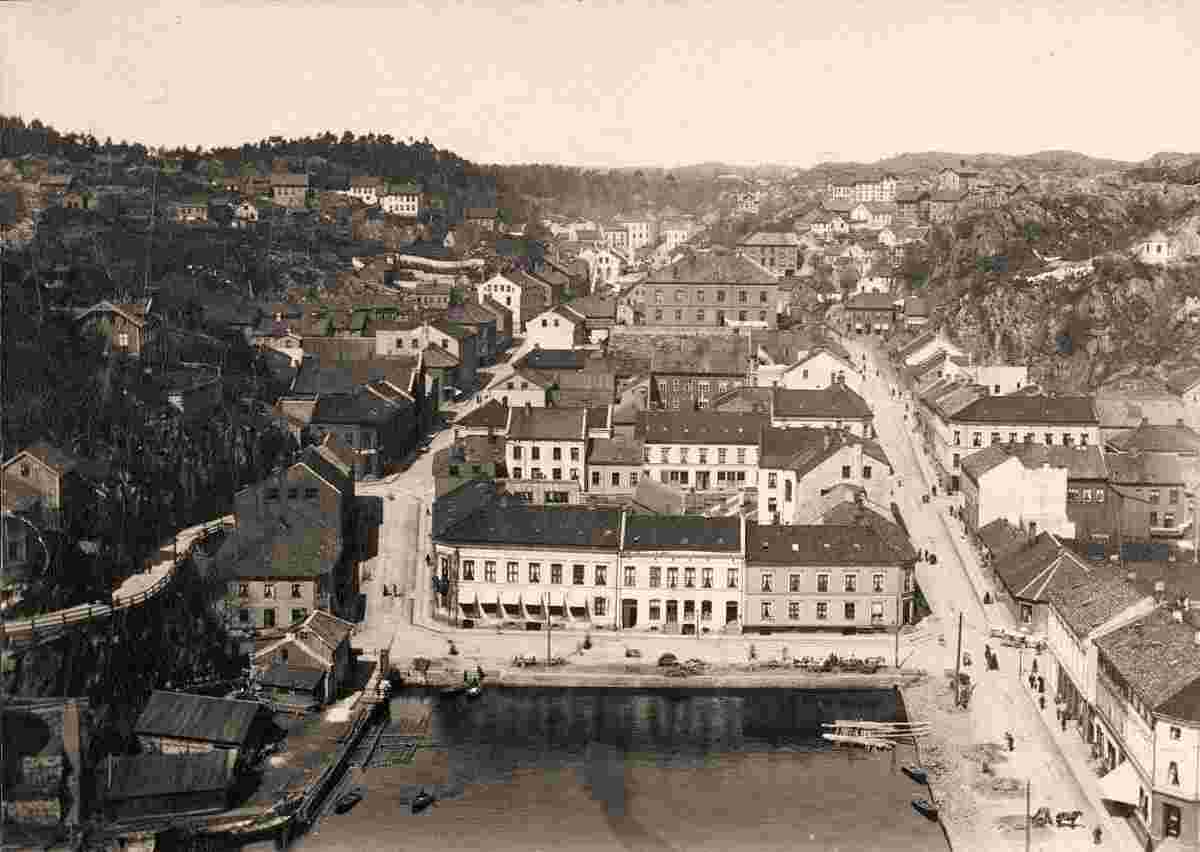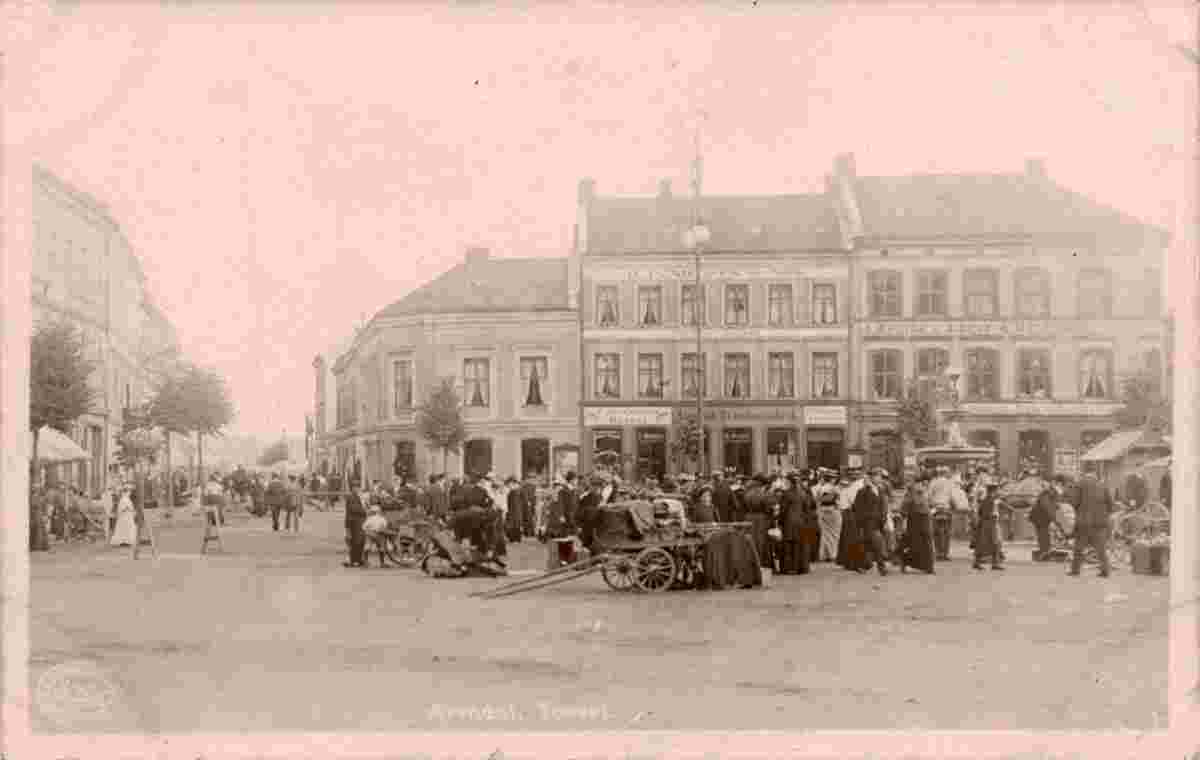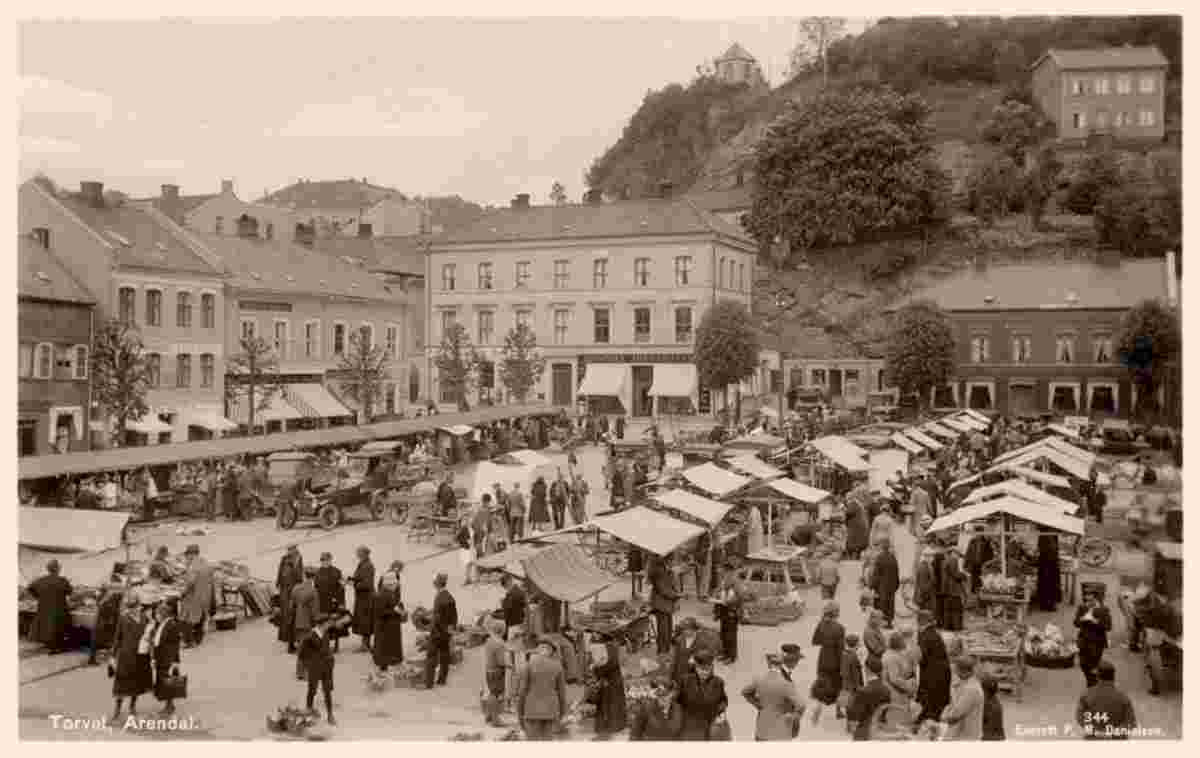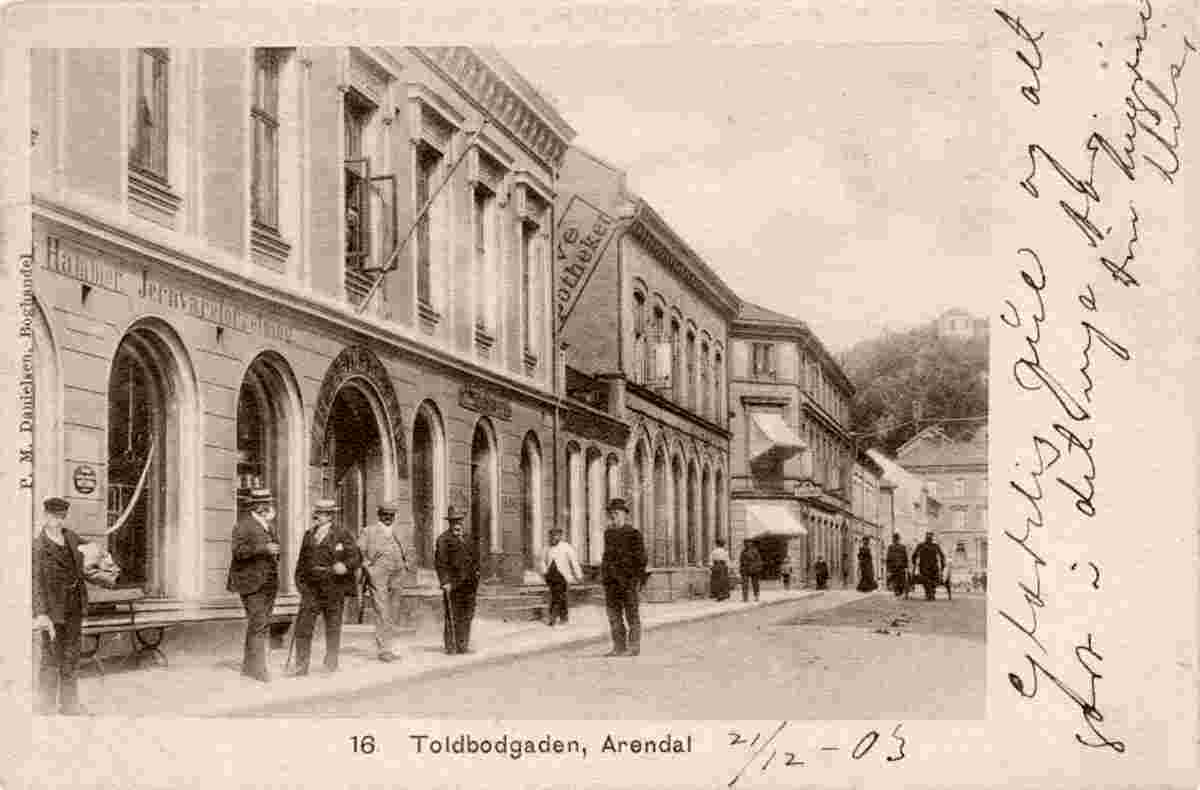Historical and old photos of Arendal, Agder
HistoryThe village of Arendal was established in the middle of the 16th century, and was then called Arendall. Initially, it had no formal town status. When the town of Christianssand was founded by King Christian IV in 1641, he granted the citizens a monopoly on all trade in Nedenæs and Lister og Mandal counties (including the area of Arendal). This grant, intended to subsidize Christianssand and its fortifications, placed existing towns in a difficult position. Both towns and the peasants in the rural countryside protested the hardships this caused. As a result, Arendal received royal permission in 1622 to continue as a loading-place for timber until a means could be found to transfer its trade to Christianssand. The town of Arendal was given market city privileges in 1723. However the peasants in the surrounding district, who by law were to sell their goods only at Arendal, were smuggling their goods out on cutters and selling them in Denmark, in the Baltic, and in Britain. This continued until 1735, when Arendal was granted a full town charter. This charter, combined with Danish imposition of a monopoly on grain imports, caused great poverty and starvation among the peasants in the surrounding districts, leading to several famous rebellions. As a result of the rebellions, the age of privileges for towns like Christianssand and Arendal came to an apparent end in 1768 by royal proclamation. But the problems did not end then; a farmer, Christian Jensen Lofthuus, in nearby Vestre Moland led a rebellion in 1786 which resulted in the government actually remedying some of the most repressive trade policies, but Lofthus died in prison. The charges against Lofthus were that he dealt in grain and other commodities to the detriment to Arendal's privileges. Shipping, shipbuilding, and timber trade as well as mining and ironworks were important branches of industry in Nedenæs county for many centuries, especially in the Arendal region. Frequent contacts with the world abroad put their mark on our culture and traditions. In 1880, it was the country's biggest port in terms of tonnage handled. At the end of the 19th century, Arendal was recognized as a major shipping centre with many wealthy shipowners. However, this came to an end following the 1886 Arendal crash, in which Axel Nicolai Herlofson had defrauded many bank customers in the city, leading to bankruptcies and extreme unemployment. At one point in the middle of the 18th century, Arendal was one of Norway's biggest mining cities. The main production consisted of iron ore and magnetite. Around the turn of the twentieth century, when thousands of Norwegians sought to take advantage of the more stable economic climate of the United States by emigrating, many of those from Arendal took their economic traditions with them. In New York City and the surrounding areas, a great deal of Americans who claim Norwegian ancestry can trace their roots to Arendal, as a great deal of Norwegian sailors, trimmers, shipbuilders, and carpenters from Arendal settled in areas of New York such as Brooklyn, Port Richmond (Staten Island), and several industrial centers in northern New Jersey such as Jersey City, Bayonne, Perth Amboy, and Elizabeth. In 1939, Arendal had the 4th largest Norwegian tanker fleet; only Oslo, Bergen, and Stavanger were larger. During the German invasion of Norway on 9 April 1940, Arendal was captured by the German torpedo boat Greif. Today, the town has small boat manufacturing, mechanical industry, electronics industry, as well as one of the world's largest silicon carbide refining plants. Origin: en.wikipedia.org | ||||||||||||
 |
Historical and old photos of Arendal, Agder
Historiske og gamle bilder av Arendal, Agder |
| Main page • Countries of Europa • Cities of Norway |
| Robinson Rd, CB 13862 Nassau, NP, The Bahamas |
